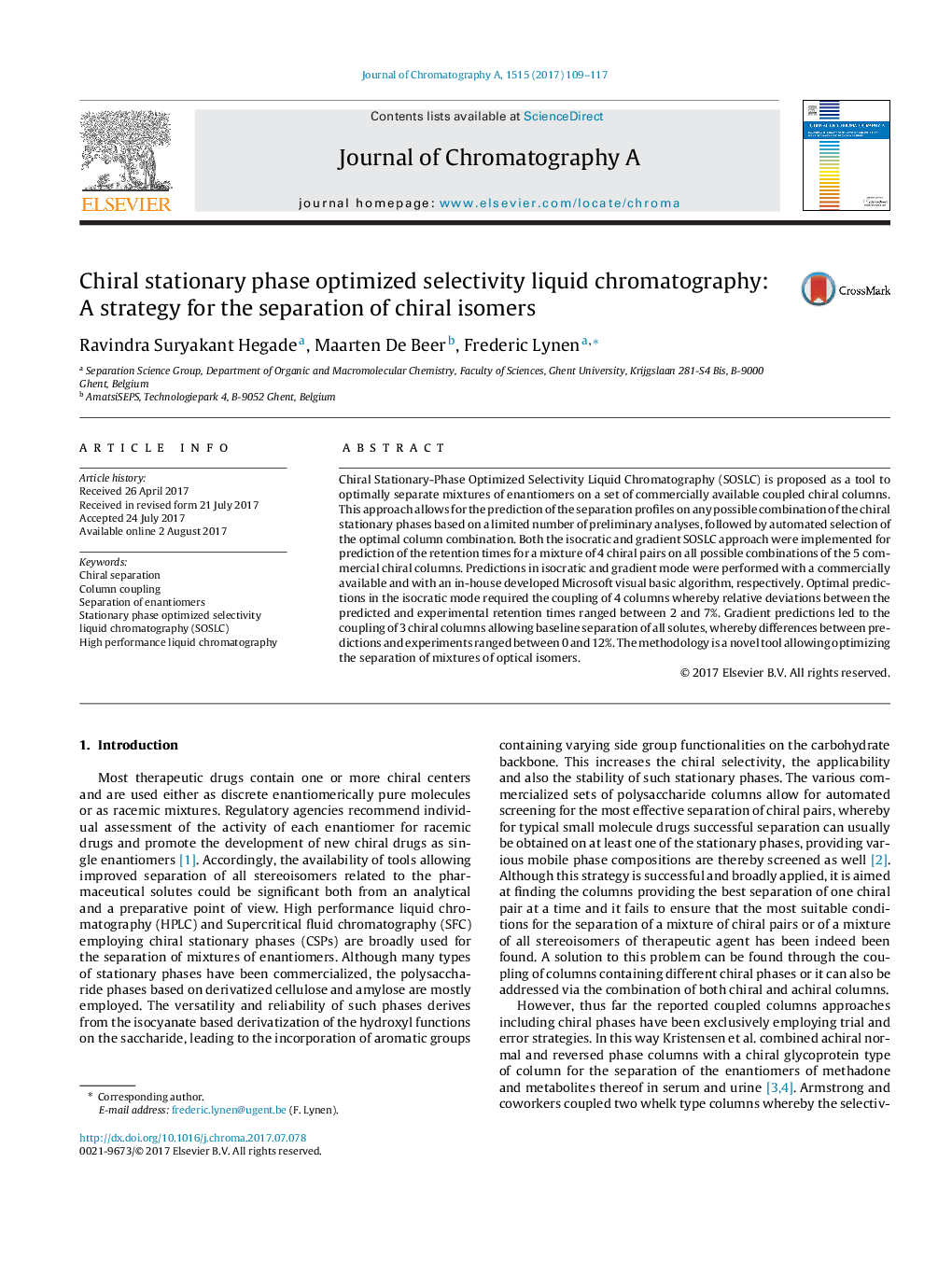| Article ID | Journal | Published Year | Pages | File Type |
|---|---|---|---|---|
| 5135081 | Journal of Chromatography A | 2017 | 9 Pages |
â¢Stationary phase Optimized Selectivity LC was applied to chiral separations.â¢Predictions of retention time were achievable with good accuracies.â¢Baseline separation could be achieved in both isocratic and gradient modes.
Chiral Stationary-Phase Optimized Selectivity Liquid Chromatography (SOSLC) is proposed as a tool to optimally separate mixtures of enantiomers on a set of commercially available coupled chiral columns. This approach allows for the prediction of the separation profiles on any possible combination of the chiral stationary phases based on a limited number of preliminary analyses, followed by automated selection of the optimal column combination. Both the isocratic and gradient SOSLC approach were implemented for prediction of the retention times for a mixture of 4 chiral pairs on all possible combinations of the 5 commercial chiral columns. Predictions in isocratic and gradient mode were performed with a commercially available and with an in-house developed Microsoft visual basic algorithm, respectively. Optimal predictions in the isocratic mode required the coupling of 4 columns whereby relative deviations between the predicted and experimental retention times ranged between 2 and 7%. Gradient predictions led to the coupling of 3 chiral columns allowing baseline separation of all solutes, whereby differences between predictions and experiments ranged between 0 and 12%. The methodology is a novel tool allowing optimizing the separation of mixtures of optical isomers.
